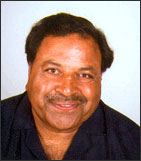Developing
A
Young Athlete

For more coaching information, visit www.coachshiv.com
| January | February | March |
|
April | May | June |
|  |
|||||
| July | August | September | October | November | December | |
![]()
INTRODUCTION
"To set goals, you have to first figure out what you want. You can't let someone else give you a goal, you have to make the decision yourself"
- Angela Ruggiero, represented USA in ice hockey 4 times in the Winter Olympics (1998 - 2010), winning a gold, a silver and a bronze
January is the time of the year when we make resolutions, set goals and strive to achieve them over the course of the year. What goals should a student athlete set, if he or she is still in high school, and would like to have a career in hockey?
The student athlete should first address the following questions:
PLANNING
After answering these questions, the student athlete should come up with goals that are clear, specific, measurable, and in writing.
The next step is to set up short term and long term plans to achieve the goals. The student athelete should sit down with his/her coach to chalk out a training plan, covering the technical, tactical, physical and psychological aspects of the game.
It will be good to keep parents in the loop regarding the plans and take their advice. In addition, there is nothing like having a mentor - a senior athlete with high level of experience - to guide along the way.
GOAL SETTING PROCESS EXAMPLE
In the example below, a high school student athlete has set a short term goal of making the university team, and earning a sports scholarship. To make the example a bit more specific, the student's goal is to make the university team as a right-half, since the position is currently vacant, but the student would like to develop versatality to be able to play more than one position.
Based on the above, the student can come up with the following training plan:
| Technical Training |
| Tactical Training |
| Physical Training |
| Psychological Training |
| Individual Training |
CONCLUSION
A number of studies have shown that student athletes who set goals become high performers and achieve better results. Therefore, student athletes who are serious about their sport should aim for SMART goals - i.e., goals that are Specific, Measurable, Attainable, Realistic and Timely.
![]()